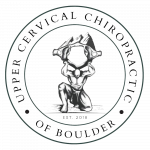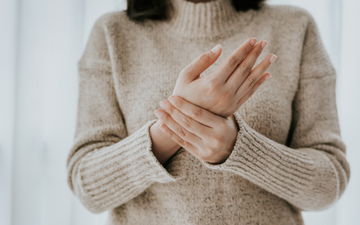What is Joint Pain?
Joint pain is a common complaint that can affect individuals of any age. Joint pain can occur anywhere around the body, but is particularly common in the knees, neck, back, and hands.
There are several different triggers of joint pain, including rheumatic diseases like arthritis. Regardless of the underlying cause, it’s common for individuals suffering from joint pain to experience a worsening in the severity and/or frequency of symptoms during the cooler winter months.
Signs and Symptoms of Joint Pain
Joint pain is characterized by an intense aching or throbbing pain at a joint site. Common accompanying symptoms include swelling at the joint, noisy or clicking joints, numbness, loss or reduced range of motion, and stiffness in the joint.
How the Upper Cervical Spine Affects Joint Pain
The upper cervical spine is made up of the seven topmost vertebrae. Like any other region of the spinal column, the upper cervical vertebrae can become misaligned due to both acute and chronic injuries. Left untreated, a vertebral misalignment in the upper cervical spine can have a cascade effect on mobility and wellbeing, putting extra strain on the other joints of the neck or back. Over time, this strain can result in localized inflammation at the joint site that will ultimately present as joint pain.
Injuries to the upper cervical spine can also trigger joint pain in other parts of the body. When a vertebral misalignment in the upper cervical spine occurs, it can cause the bones, ligaments, and muscles in surrounding support structures, like the hip or shoulder, to shift in order to compensate for the weight of the head or body. Over time, the added pressure placed upon these joints can develop into a trigger for joint pain.
While joint pain may be easy to ignore in the warmer months, as the weather cools, this pain has a tendency to become more pronounced. This is due to the thickening of synovial fluid in the joint. As the synovial fluid thickens, there is less lubrication in the joint, resulting in increased pain and stiffness when the joint is in motion.
How Our Upper Cervical Chiropractic Treatment for Joint Pain Works
At Upper Cervical Chiropractic in Boulder, our upper cervical chiropractic specialists
use the Blair Upper Cervical Chiropractic Technique to help treat joint pain. The Blair Upper Cervical Chiropractic Technique uses advanced diagnostic tools and trained Blair practitioners to diagnose and treat upper cervical spinal misalignments. Using the Blair Technique, the health and function of the upper cervical spine is restored, relieving the symptoms of joint pain and providing long-term relief for patients during cooler weather.
Dr. Christina Coblish and Dr. Ryan Moeskau, our Blair Upper Cervical Technique specialists, are here to help you with your winter joint pain. Before your treatment, a range of diagnostic tests will be performed to determine whether a misalignment in the upper cervical spine could be behind your joint pain. Using cutting-edge 3D imaging software, such as CBCT scans, Dr. Coblish and Dr. Moeskau will create a detailed map of your upper cervical spine. Using this technique minimizes guesswork and helps Dr. Coblish and Dr. Moeskau to pinpoint any vertebra that require specialized treatment.
Following your initial consultation, Dr. Coblish and Dr. Moeskau will use non-invasive, precise, and gentle Blair correction techniques to coax any affected vertebra back into natural alignment. Adjusting the upper cervical spine back to its natural alignment will alleviate excess strain on the joints of the neck and shoulders, reducing localized inflammation and minimizing the frequency and severity of joint pain symptoms.
If you’re suffering from joint pain this winter, Dr. Coblish and Dr. Moeskau can provide you with lasting relief. We service patients across Colorado, including Boulder, Longmont, Louisville, Erie, Lafayette, Broomfield, and Denver.


